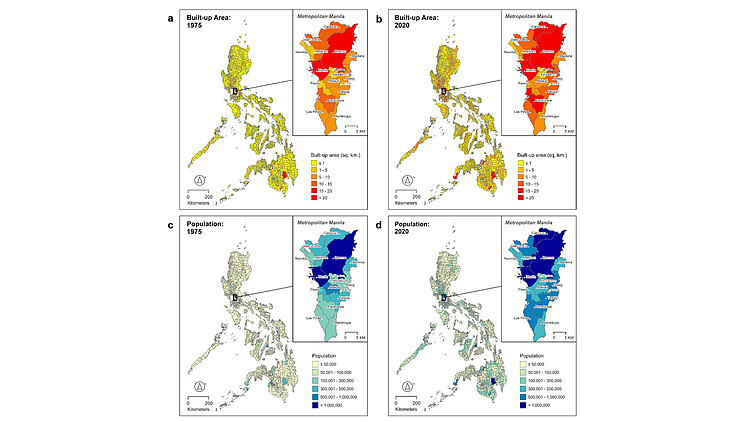Land Use Efficiency across the Philippines: A Comprehensive Analysis Using Global Earth Observation Data and SDG 11-3-1 Indicators

| Team: | J. R. Santillan, M. Dorozynski, C. Heipke |
| Jahr: | 2023 |
| Laufzeit: | Since 2023 |
Urbanization, a global phenomenon with profound implications for sustainable development, is a focal point of Sustainable Development Goal 11 (SDG 11). Aimed at fostering inclusive, resilient, and sustainable urbanization by 2030, SDG 11 emphasizes the importance of monitoring land use efficiency (LUE) through indicator 11.3.1. In the Philippines, urbanization has surged over recent decades. Despite its importance, research on urbanization and LUE has predominantly focused on the country’s national capital region (Metro Manila), while little to no attention is given to comprehensive investigations across different regions, provinces, cities, and municipalities of the country. Additionally, challenges in acquiring consistent spatial data, especially due to the Philippines’ archipelagic nature, have hindered comprehensive analysis. To address these gaps, this study conducts a thorough examination of urbanization patterns and LUE dynamics in the Philippines from 1975 to 2020, leveraging Global Human Settlement Layers (GHSL) data and secondary indicators associated with SDG 11.3.1. Our study examines spatial patterns and temporal trends in built-up area expansion, population growth, and LUE characteristics at both city and municipal levels. Among the major findings are the substantial growth in built-up areas and population across the country. We also found a shift in urban growth dynamics, with Metro Manila showing limited expansion in recent years while new urban growth emerges in other regions of the country. Our analysis of the spatiotemporal patterns of Land Consumption Rate (LCR) revealed three distinct evolutional phases: a growth phase between 1975-1990, followed by a decline phase between 1990-2005, and a resurgence phase from 2005-2020. Generally declining trends in LCR and Population Growth Rate (PGR) were evident, demonstrating the country’s direction towards efficient built-up land utilization. However, this efficiency coincides with overcrowding issues as revealed by additional indicators such as the Abstract Achieved Population Density in Expansion Areas (AAPDEA) and Marginal Land Consumption per New Inhabitant (MLCNI). We also analyzed the spatial patterns and temporal trends of LUE across the country and found distinct clusters of transitioning urban centers, densely inhabited metropolises, expanding metropolitan regions, and rapidly growing urban hubs. The study's findings suggest the need for policy interventions that promote compact and sustainable urban development, equitable regional development, and measures to address overcrowding in urban areas. By aligning policies with the observed spatial and temporal trends, decision-makers can work towards achieving SDG 11, fostering inclusive, resilient, and sustainable urbanization in the Philippines.


